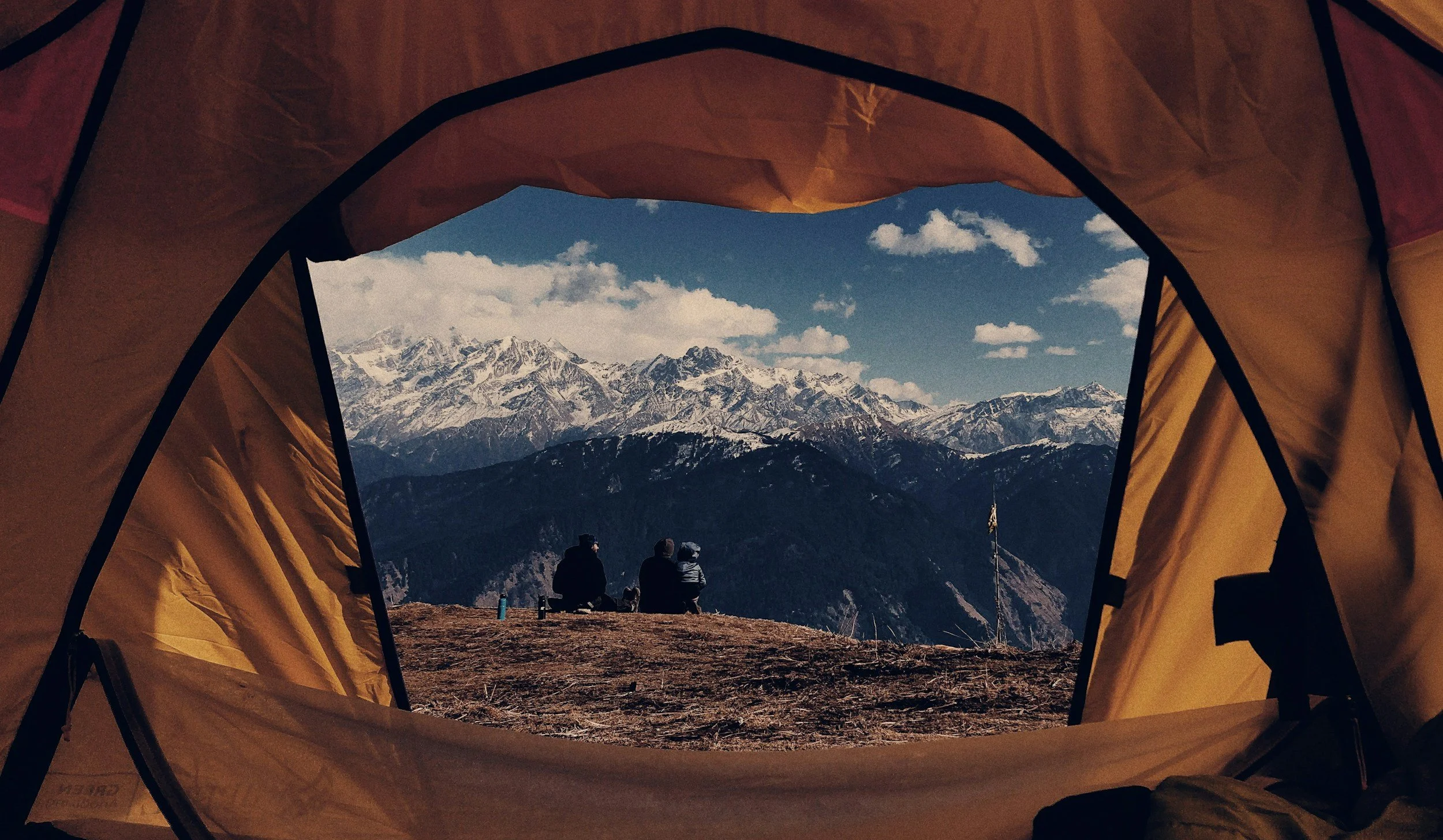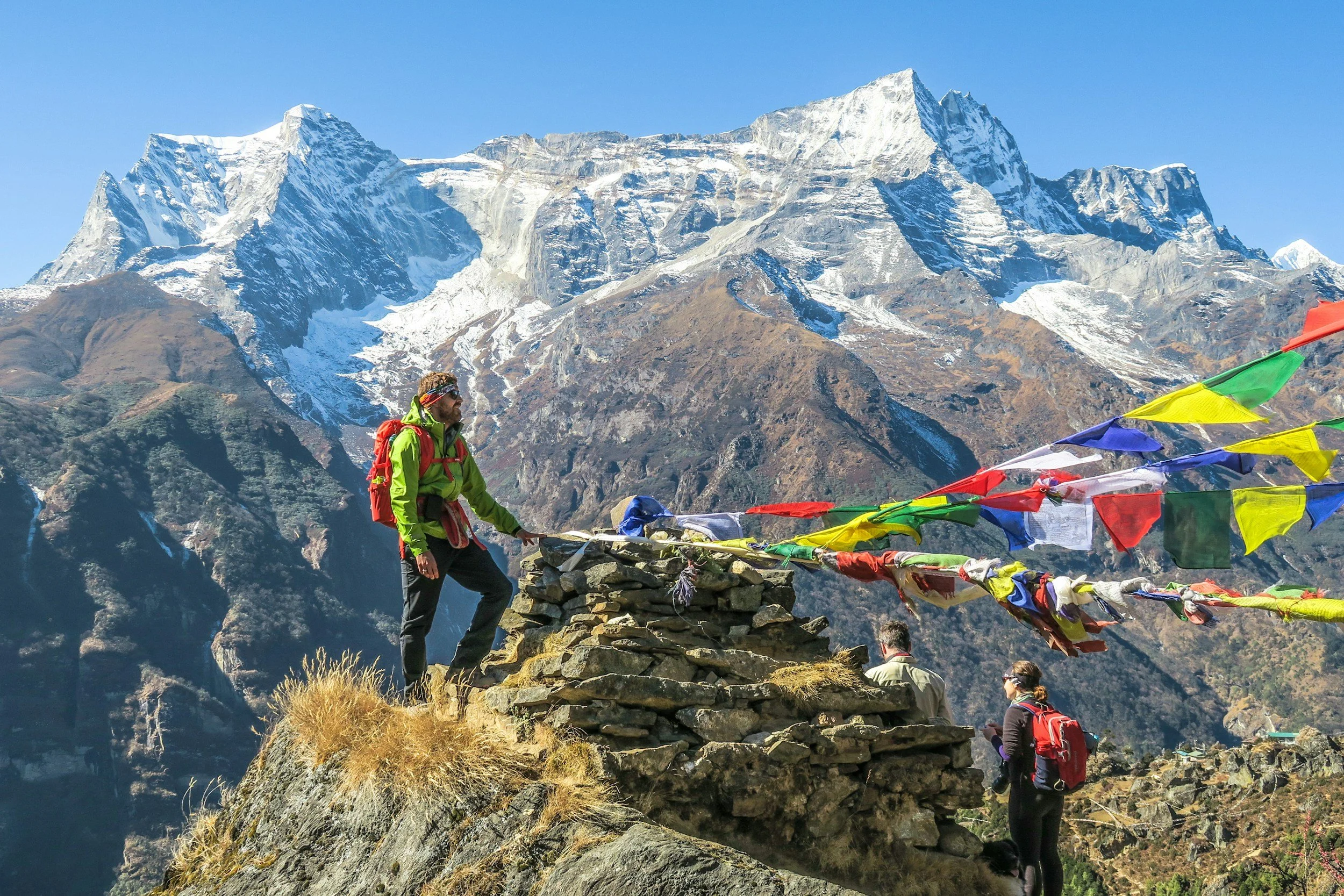The Best Hiking Boots for the Annapurna Circuit - What you REALLY Need to Know
You have booked to come on our Trails and Fitness Annapurna Circuit Hiking Adventure Holiday, and we cant wait! This is the first of our blog posts to help you plan and prepare for the trip of a lifetime!
You’re packing and planning what boots to bring, but trust me - boots can make or break the journey. Discover the top 5 hiking boots built for altitude, ice, and insane terrain—plus I’ve added in some expert tips to keep your feet blister-free.
We’re about to hike through some of the most jaw-dropping terrain on the planet. Towering peaks, cloud-wrapped forests, suspension bridges that’ll have you questioning your life choices, and eat enough dal bhat to permanently change how you feel about lentils.
But before you get carried away dreaming of Thorong La Pass and yaks with serious attitude, let’s get one thing straight:
Your boots matter. A lot.
Picking the right hiking boots for the Annapurna Circuit isn’t just about ticking off a gear checklist — it’s about making sure you actually enjoy the trek you’ve spent months planning and preparing for. We’re not talking dramatic survival scenarios here — no yetis, promise. I mean the very real moment where you’d rather crawl down the mountain barefoot than spend another second in boots that are wrecking your feet.
This trek is long. It’s steep. It’s muddy, rocky, dusty, and sometimes snowy. One hour you’re slogging uphill in the heat, the next you’re tiptoeing over ice like Bambi on a bad day. Your feet will be doing most of the heavy lifting — if your boots don’t step up, you’ll know about it fast.
This guide is here to help you find the boots. The pair you’ll be silently high-fiving by day 9 when your quads are toast but your feet are still surprisingly smug. Let’s dive in — because the only thing worse than bad boots is realising you’re stuck with them for 16 days straight.
Functionality and comfort — why getting your hiking boots right for the Annapurna Circuit isn’t negotiable
Let’s be clear: the Annapurna Circuit is not your casual Sunday stroll. You’re looking 16 days of terrain that flips from sweaty jungle to snow-covered high passes — sometimes all within the same day. You’ll be topping out at 5,416 metres at Thorong La Pass. That’s high enough to make you rethink some life decisions. Or at the very least, rethink what’s on your feet.
To get through the Annapurna Circuit in one piece (and actually enjoy it), your boots need to handle everything this trail throws at you:
Sharp ankle-wrecking scree and loose rock, slippery river crossings and frozen snowfields, brutal climbs and quad-crushing descents, random downpours, surprise blizzards, and searing Himalayan sunshine and let’s not forget — you’ll be living in them for 16 days. So yeah, no pressure. This isn’t a case of “any old hiking boots will do.” Picking the right pair for trekking in Nepal is non-negotiable. Your boots aren’t just gear — they’re your lifeline.
What actually makes a great hiking boot for the Annapurna Circuit?
Not all boots are created equal. And let’s be honest — half the advice online comes from people who’ve never set foot near a mountain, let alone tackled a Himalayan trail. So we’re skipping the fluff and cutting straight to what actually matters when you’re choosing boots for this trek.
Here’s what you want:
1. Ankle support that does its job
Loose gravel, uneven stone staircases, and sketchy descents make ankle sprains one of the most common trekking injuries in Nepal. Go for mid- to high-cut boots that hug your ankle securely — but don’t feel like you’ve strapped on a plaster cast.
2. Waterproofing you can trust
At some point, you’re going to hit rain, snow, icy slush — or all three before lunch. Boots with Gore-Tex liners or solid waterproof membranes are gold here. Dry feet = happy trekker.
3. Soles with serious bite
You’ll be walking on everything from dusty switchbacks to icy boulders. You need aggressive tread and deep lugs. Vibram soles are a reliable go-to if you want grip that won’t quit.
4. Cushioning that keeps you going
Your boots should feel like a solid, supportive handshake for your feet — not a vice grip. Think decent arch support, enough padding, and a bit of flex so you’re stable but not rigid.
5. Boots that are already broken in
If you take brand-new boots to Nepal, you’re basically signing up for blisters and bad moods. The best trekking boots for the Annapurna Circuit are the ones that already feel like an extension of your feet. Break them in before you fly — your future self will be very grateful.
Best Hiking Boots for the Annapurna Circuit
You’ve booked your flights, sorted your permits, and your stoke levels are sky-high. Now comes the not-so-glamorous—but absolutely crucial—question: what are the best hiking boots for the Annapurna Circuit?
We’ve pored over expert reviews, scoured mountaineering forums, and endured way too many Reddit threads so you don’t have to. Below are the boots built to survive everything the Circuit throws your way: altitude, scree, snowfields, river crossings, and even that sneaky mudslide outside Chame. These boots are tough-tested, mountain-approved, and ready to crush some Himalayan magic.
1. La Sportiva Nepal Evo GTX – Built for the brutal bits
Looking for a mountaineering boot that eats icy switchbacks for breakfast? This is it. A true high-mountain beast, trusted by alpine pros and updated with cutting-edge comfort for modern trekkers.
Why it stands out:
Fully insulated & waterproof: Gore-Tex Insulated Comfort membrane keeps feet dry and warm during summit pushes.
Tuned for vertical terrain: 3D Flex ankle system adds stability and flexibility—especially helpful on uneven ridgelines.
Customizable fit: Removable, adjustable tongue lets you tweak the fit based on socks, foot shape, or terrain.
Crampon compatible: Works with semi-auto and automatic crampons (always double-check before your trip).
Award-winning: Climbing Magazine Editor’s Choice for alpine excellence.
Did you know? The Nepal Evo GTX is a favorite for technical climbs like Island Peak and Mount Kazbek, where warmth and stability are mission-critical.
Tech specs:
Best for: High-altitude trekking, winter ascents, mixed climbing, heavy-load expeditions
Weight: 1.85 kg (4.1 lbs)
Waterproofing: Gore-Tex Insulated Comfort
Upper: 3.2mm Idro-Perwanger leather + abrasion-resistant textile
Outsole: Vibram Matterhorn with Impact Brake System
Insole: 9mm Ibi-Thermo insulation
Sizes: EU 38–48 (half sizes)
Price: £455 ($599)
Not for: Summer hikers, casual travellers, ultralight minimalists
Official product page → La Sportiva Nepal Evo GTX
2. Salomon Quest 4 Gore-Tex – The trekker’s workhorse
Built for long-haul comfort and all-terrain durability, the Quest 4 is perfect for the relentless ups and downs of Annapurna.
Key features:
Gore-Tex waterproofing: Keeps your feet dry in rain, snow, and stream crossings.
All Terrain Contagrip outsole: Excellent traction on wet rocks, dusty switchbacks, and everything in between.
4D Advanced Chassis: Boosts stability on uneven trails.
Protective toecap & mudguard: Shields against debris and knocks.
EnergyCell midsole: Absorbs shock, reducing fatigue on long descents.
Tech specs:
Best for: Multi-day treks, backpacking, mixed alpine terrain
Weight: 655 g (1.44 lbs)
Waterproofing: Gore-Tex
Upper: Nubuck leather + water-repellent textile
Outsole: All Terrain Contagrip
Sizes: Men’s & women’s full range
Price: £200 ($230)
Not for: Lightweight day hikes, casual travel
Official product page → Salomon Quest 4 Gore-Tex
3. Scarpa Kinesis Pro GTX – Built to go the distance
This rugged boot is made for trekkers who want bombproof protection and plush comfort, no matter how gnarly the trail gets.
Standout features:
Gore-Tex Performance Comfort: Waterproof and breathable, in all conditions.
Vibram Biometric outsole: Supreme grip and stability on rocky surfaces.
Full rubber rand: Shields boot from abrasion and impacts.
Micro-pulley lacing: Smooth, secure fit with minimal effort.
Smoothout leather upper: Resilient and comfortable, even in harsh weather.
Tech specs:
Best for: Rugged backpacking, alpine treks, tough expeditions
Weight: 850 g (1.8 lbs per boot)
Waterproofing: Gore-Tex Performance Comfort
Upper: 2.4mm Smoothout leather
Outsole: Vibram Biometric / XS Trek
Sizes: Men’s & women’s EU sizes
Price: $399
Not for: Short hikes, ultralight trips, low-ankle support seekers
Official product page → Scarpa Kinesis Pro GTX
4. Merrell Moab 3 Mid Waterproof – Comfort meets capability
If you want a versatile, eco-friendly boot that can handle it all—without breaking the bank—the Moab 3 is a solid choice.
What we love:
Waterproof membrane: Dry feet in all conditions.
Mid-height support: Boosts ankle stability on rocky trails
Vibram TC5+ outsole: Grips everything from slick rocks to dusty paths.
Merrell Air Cushion heel: Absorbs impact for smoother descents.
Eco-friendly build: Recycled laces, mesh, and webbing.
Tech specs:
Best for: Long treks, all-terrain hiking
Weight: 384 g (13.57 oz) per shoe
Waterproofing: Yes
Upper: Leather + breathable mesh
Outsole: Vibram TC5+
Sizes: EU 38–50 (half sizes)
Price: £145 ($150)
Not for: Glacier travel, city use, ultralight minimalists
Official product page → Merrell Moab 3 Mid Waterproof
5. Asolo Fugitive GTX (Men) / Stynger GTX (Women) – All-rounder classics
If you want a boot that strikes a balance between comfort, protection, and durability, Asolo’s Fugitive (men) and Stynger (women) are long-time favorites.
Why they’re solid:
Gore-Tex lining: Dry and breathable in all conditions.
Duo Asoflex board: Flex + support on long, hard days.
Asolo Syncro outsole: Excellent grip and self-cleaning lugs.
Rubber toe cap: Extra protection from rock strikes.
Resoleable: Extend boot life with new soles.
Tech specs:
Best for: High-altitude treks, rugged backpacking
Men’s: 690 g | Women’s: 550 g
Upper: Suede + high-tenacity nylon
Outsole: Asolo Syncro (rubber-PU)
Sizes: Men’s & women’s full range
Price: £220 ($325)
Not for: Casual day hikes, ultralight trekkers
Official product page → Asolo Fugitive GTX / Stynger GTX
Fit Tips to Avoid Blisters, Bruises & Boot Regret
Nothing derails a great hike or long run faster than sore feet and battered toes. Follow these tried-and-true tips to keep your feet happy and blister-free:
1. Nail the Fit (Literally and Figuratively)
Always try boots or trail shoes later in the day when your feet are slightly swollen — just like they’ll be on the trail. Ensure a thumb’s width of space between your longest toe and the end of the shoe. Keep toenails short and filed smooth to avoid bruising and snagging inside the toe box.
2. Lock Your Heel
Use a heel-lock lacing technique to minimize heel slip and reduce blister risk on your Achilles. Your heel should feel snug, but your toes should still wiggle freely.
3. Socks Matter More Than You Think
Opt for moisture-wicking, seamless socks made from merino wool or synthetic blends — avoid cotton. Consider toe socks or double-layer blister socks if you’re prone to hotspots
4. Test & Break In Gradually
Wear your boots or shoes on shorter walks and hikes before committing to long outings. Pay attention to any pressure points early — they won’t “fix themselves” later.
5. Hydrate Your Skin
Use foot balms or anti-friction sticks on blister-prone areas before you head out. Keep skin supple with regular moisturizing to reduce cracking and friction.
6. Pack a Foot Care Kit
Include blister plasters, tape, alcohol wipes, and a small pair of scissors — you’ll be glad you did. Address hotspots immediately, not after they’ve turned into full blisters.
7. Swap Insoles if Needed
Factory insoles are often flimsy. Consider aftermarket options for better arch support and shock absorption.
8. Listen to Your Feet
Tingling, rubbing, or numb toes? Adjust lacing, loosen socks, or stop and check early. Don’t push through pain — minor irritations can escalate fast.



